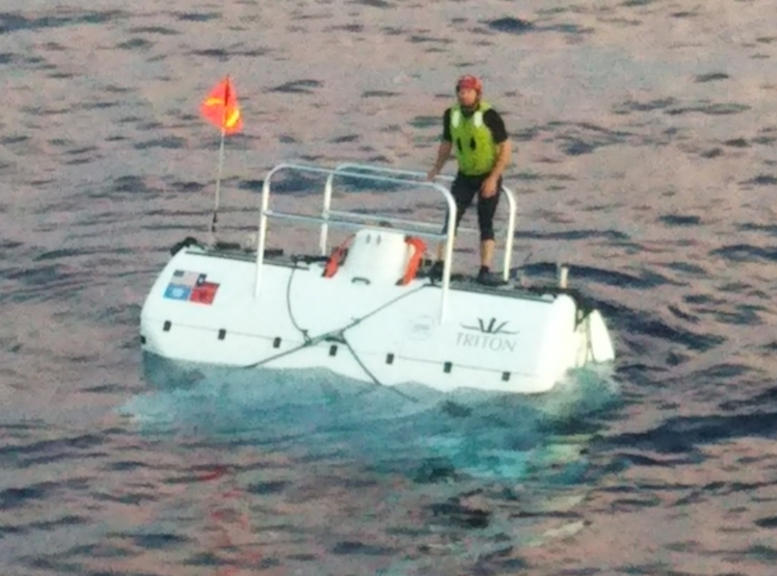This vertical cliff consists of soft mud deposited on the Japan Trench bottom and was uplifted ~60 m by the 2011 megaquake. This was the first time that the fault scarp of a trench-type earthquake was observed and visually recorded. Credit: Niigata University
On September 4, 2022, Hayato Ueda, a geologist from Niigata University, embarked on a submarine journey alongside pilot Chris May into the heart of the Japan Trench, the epicenter of the catastrophic 2011 Tohoku-oki earthquake and tsunami. Descending to the trench’s floor at a depth of 7,500 meters, they encountered a 26-meter-tall near-vertical cliff on the eastern side of a ridge standing 60 meters tall.
Previous bathymetric surveys from the sea surface have revealed that the ridge did not exist before, and appeared just after the megaquake accompanied with a fault on its eastern flank. He and his colleague scientists on deck thus concluded that the cliff was a surface expression of a coseismic movement of the fault. The cliff consisted of unconsolidated soft mud. The lower slope than the cliff was occupied by abundant debris of the same soft mud blocks, which obviously supplied from the cliff. The observed sharp fracture surfaces and highly angular edges, both on the cliff and debris blocks, imply very quick increase of stress that fractured the soft muds before they plastically flowed, and thus support a coseismic origin of the cliff.
Detailed Observations
The vehicle traversed the ridge across the fault precisely measuring the topography using an acoustic transponder and pressure gauge. The height and uplifted volume of the ridge both suggest a coseismic slip of the fault as large as 80–120 m (the value depends on the assumed dip angle of the underlying fault) in the Japan Trench.

This vehicle has an ability to dive into the depth of 11,000 m, the world’s deepest ocean bottom, and thus is called as a “full-depth submersible.” It enabled researchers to approach to the Japan Trench bottom in the epicenter area for the first time more than 10 years after the megaquake. Without in situ observation using this submersible, the fault scarp in the ultra-deep sea would not have discovered. Credit: Niigata University
This estimation is greater than the previously estimated fault slip (~65 m) beneath the slope on the west of the trench axis. They attributed the excess fault slip in the trench to local enhancement owing to the uneven top surface of the subducting Pacific plate, which modified the fault geometry and stability.
Geological Impact and Tsunami Generation
The 2011 megaquake resulted from the rupture and slip of the plate boundary fault between the northeast Honshu Island of Japan (Okhotsk plate) and the subducting Pacific plate. After the earthquake, many geodetic and geophysical studies have proposed that this coseismic fault movement probably propagated to the trench. Because topographic change by near-surface fault movement is one of the major causes of tsunamis, it is important to precisely know what occurred in the deep-sea trench when the trench-type earthquake such as the 2011 event occurred. However, because of great depths, no submersible vehicles (neither manned nor remotely operated) had been able to access to the Japan Trench bottom.
This study was the first time to observe, visually record, and precisely measure the topographic change (including fault cliff) in the trench by a single trench-type megaquake event. It verified that the fault slip surely propagated to the surface at the 2011 event, and deduced that the amount of the slip was at least locally as great as 100 m. These results are expected to contribute to our understanding of genesis and the hazards of tsunamis triggered by trench-type earthquakes.
Reference: “The submarine fault scarp of the 2011 Tohoku-oki Earthquake in the Japan Trench” by Hayato Ueda, Hiroshi Kitazato, Alan Jamieson and Pressure Drop Ring of Fire Expedition 2022 Japan Cruise Leg2 science team, 26 December 2023, Communications Earth & Environment.
DOI: 10.1038/s43247-023-01118-4
The study was funded by the European Research Council, the Danish National Research Foundation, and the Japan Society for the Promotion of Science.





